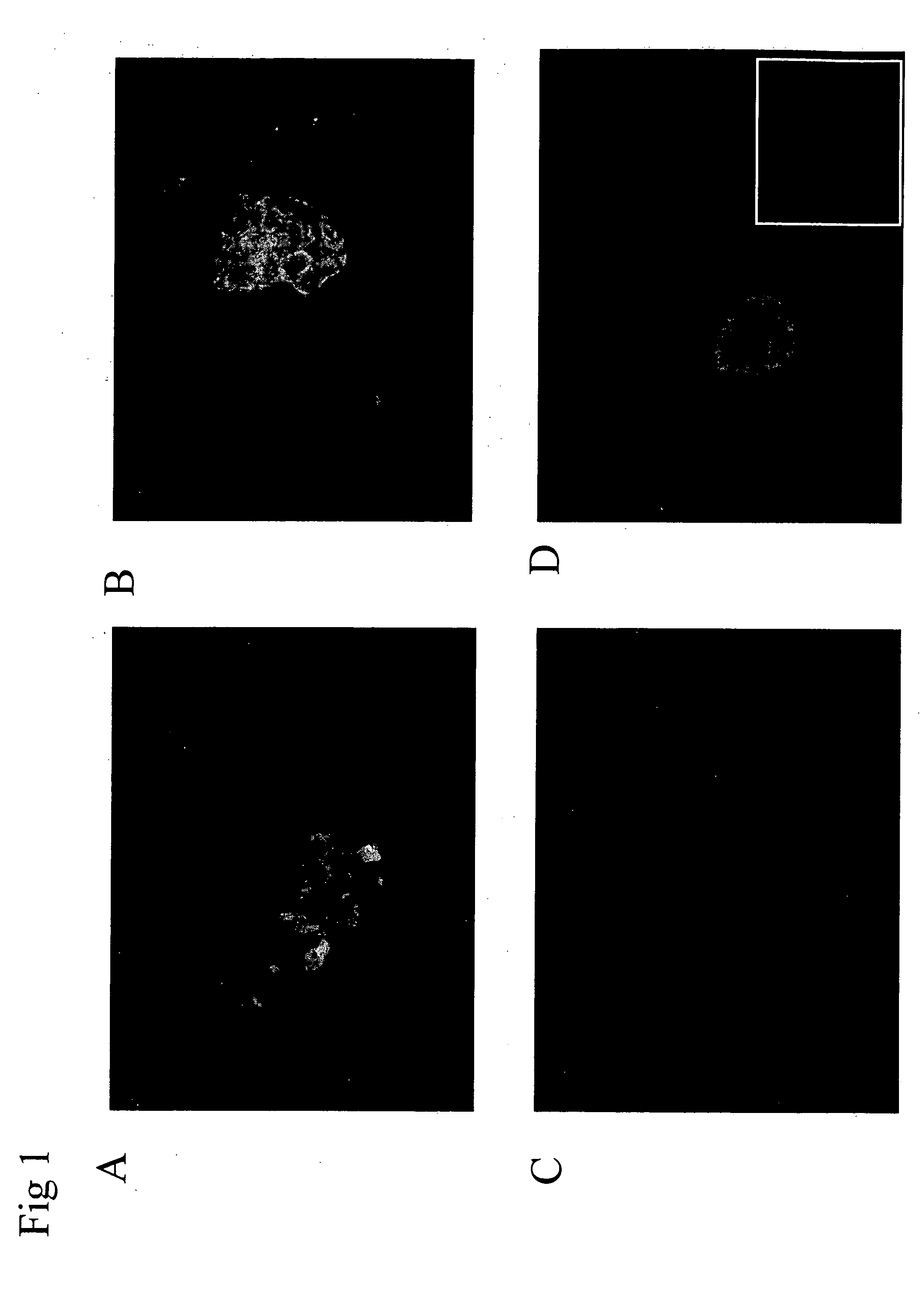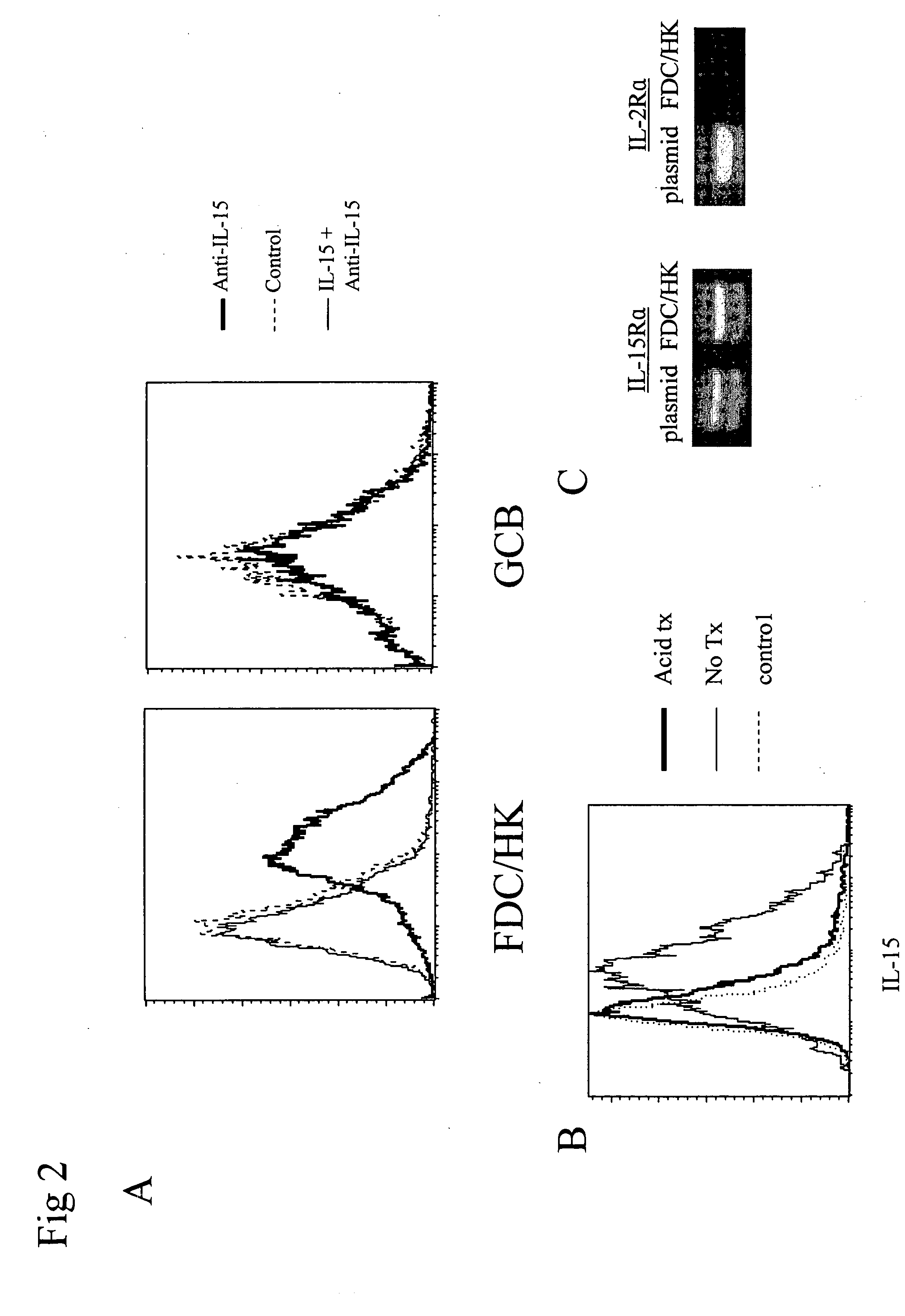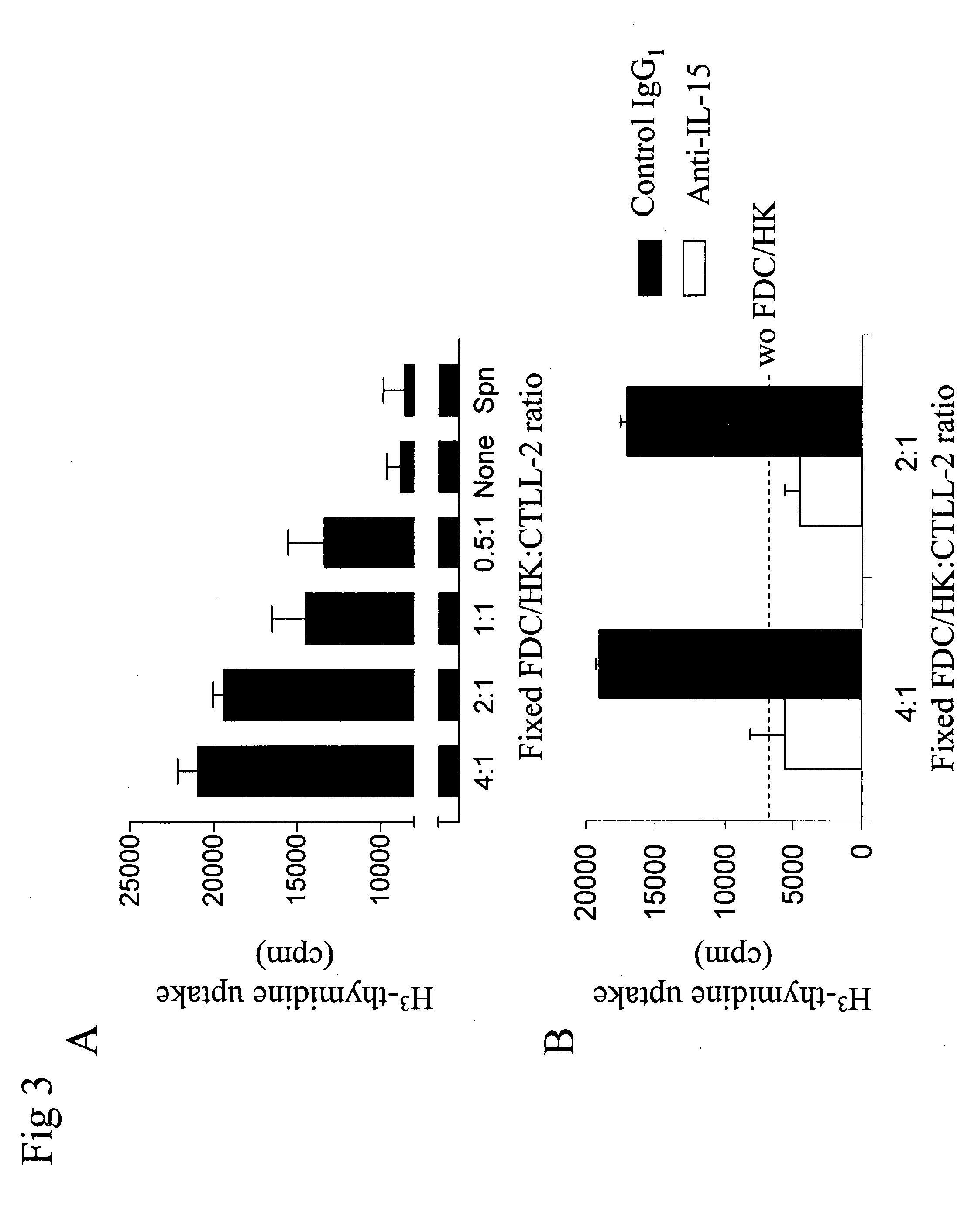Enhancement of B cell proliferation by IL-15
a technology of b cell proliferation and il-15, which is applied in the direction of antibody medical ingredients, immunological disorders, peptide/protein ingredients, etc., to achieve the effect of inhibiting the proliferation of neoplastic cells
- Summary
- Abstract
- Description
- Claims
- Application Information
AI Technical Summary
Benefits of technology
Problems solved by technology
Method used
Image
Examples
examples
[0070] Material and Methods for Examples
[0071] Antibodies
[0072] Anti-IL-15 mAb (M110 and M111: IgG1; M112: IgG2b) were generated as described generally in U.S. Pat. No. 5,795,966. Briefly, Balb / c mice were boosted twice with 10 μl of human (h) IL-15-flag in RIBI adjuvant (Ribi Corp, Hamilton, Mont.). Three month after the last boost, one animal was boosted intravenously with 3 μg of hIL-15 in PBS. Three days later, the spleen was removed and fused with Ag8.653 using 50% PEG (Sigma, St. Louis, Mo.). The fused cells were plated into 96 well plates in DMEM containing HAT supplement (Sigma). Hybridoma supernatants were screened by antibody capture assay. Briefly, 96 well plates were coated with 10 μg / ml of goat anti-mouse Ig, overnight. After blocking with 3% BSA, 50 μl of cell supernatant were added to each well. After one hour plates were washed with PBS with 0.05% Tween 20. Iodinated hIL-15 was added to plates for 1 hour. After washing, plates were exposed to phosphoimager plates f...
example 2
IL-15 was Present on the Surface of FDC / HK Cells Bound to IL-15Rα
[0089] The production of IL-15 by a primary FDC cell line, FDC / HK, which was shown to share many of FDC characteristics including the capacity to support GC-B cell survival and proliferation (Li, L. et al., Semin. Immunol. 14:259, 2002; Kim, H.-S. et al., J. Immunol. 155:1101, 1995) was investigated. Because IL-15 was not detected in the culture supernatant of FDC / HK cells (2×105 cells / ml) by ELISA (assay sensitivity ≧19 pg / ml), surface expression of IL-15 was studied using methods as reported (Morris, A. E., et al. 1999. J Biol Chem 274:418; Kim, H.-S., et al. 1994. J. Immunology 153:2951; Naiem, M., et al. 1983. J. Clin. Pathol. 36:167; Bulfone-Paus, S., et al. 1997. Nat Med 3.1124). A highly sensitive surface FACS staining method using tyramine amplification method (Flow-Amp®) was used to detect IL-15. As shown in FIG. 2A, IL-15 was detected on FDC / HK cells whereas GC-B cells were negative (FIG. 2A). These results a...
example 3
Membrane Bound IL-15 on the FDC / HK Surface is Biologically Active
[0092] To examine the biological activity of surface bound IL-15 on FDC / HK cells, the IL-2 and IL-15 dependent CTLL-2 cell assay was employed. Although soluble IL-15 was not detectable by ELISA, FDC / HK cells were fixed with 1% paraformaldehyde to exclude the false positive results by soluble IL-15. Incorporation of tritiated thymidine by CTLL-2 cells increased in proportion to the number of fixed FDC / HK cells present in cultures (FIG. 3A). At the ratio of 4:1 of FDC / HK cells to responding CTLL-2 cells, the value of cpm was almost three times higher than negative controls (21,000 to 7,500). The relatively higher background proliferation of CTLL-2 cells (7,500 cpm) without fixed FDC / HK cell control wells can be attributed to suboptimal dose of IL-2 added to increase the sensitivity of the assay. The result is consistent with the previous report that the rebound IL-15 is functionally active on the cell surface (Morris, A...
PUM
| Property | Measurement | Unit |
|---|---|---|
| pH | aaaaa | aaaaa |
| pH | aaaaa | aaaaa |
| pH | aaaaa | aaaaa |
Abstract
Description
Claims
Application Information
 Login to View More
Login to View More - R&D
- Intellectual Property
- Life Sciences
- Materials
- Tech Scout
- Unparalleled Data Quality
- Higher Quality Content
- 60% Fewer Hallucinations
Browse by: Latest US Patents, China's latest patents, Technical Efficacy Thesaurus, Application Domain, Technology Topic, Popular Technical Reports.
© 2025 PatSnap. All rights reserved.Legal|Privacy policy|Modern Slavery Act Transparency Statement|Sitemap|About US| Contact US: help@patsnap.com



